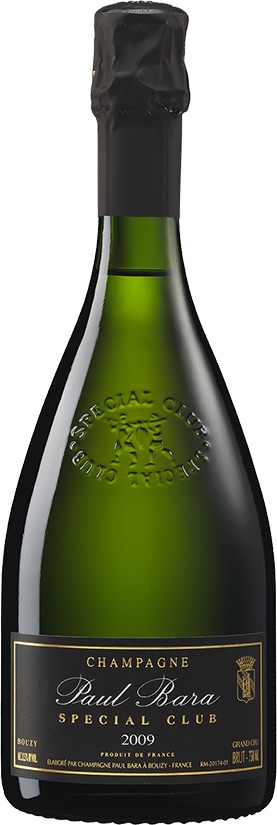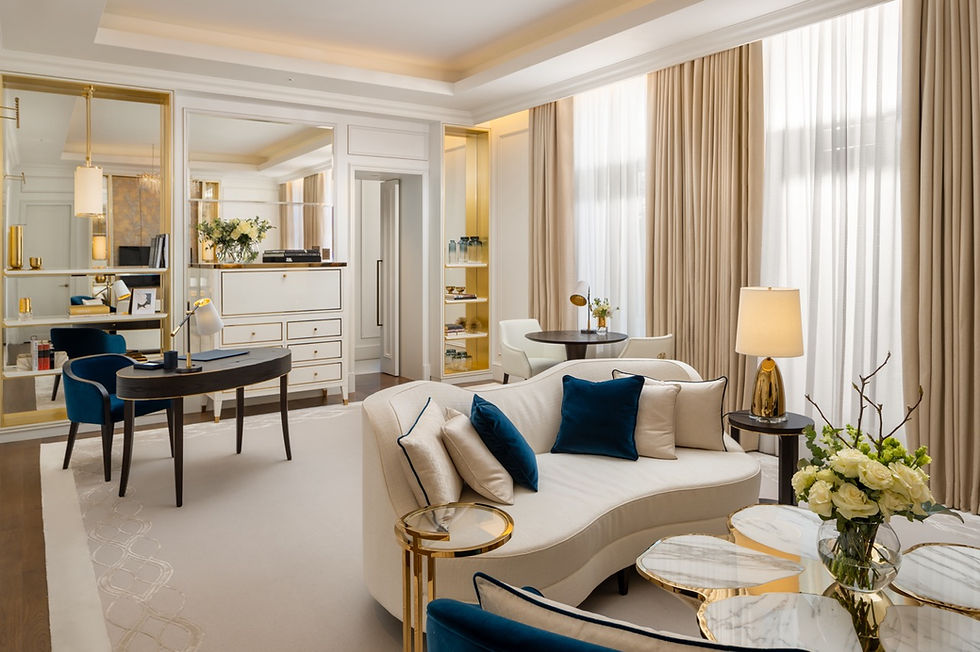PAUL BARA CHAMPAGNE – An Enchanting, Transformative Experience
- Izabela Corina Bossi

- Jul 19, 2022
- 4 min read
Updated: Oct 29, 2022

People say that “it is never a bad time for champagne”. Whether you are at a New Year’s Eve party with friends, a romantic dinner, a business gathering or in your bathtub, surrounded by scented candles, a glass (or two) of good champagne only makes things better.
Whenever I hear the word “champagne” my mind goes straight to the bubbly sensation of joy and celebration, a feeling of accomplishment and success. I do not recall all the moments in my life worth celebrating, but I do remember some of the most exquisite brands of champagne that accompanied those moments for me.

Champagne is a drink that is meant to bring people together, it encourages us to create happy memories that would warm our hearts in the future, just by remembering the occasion and the reason for the respective celebrations.
In retrospect, I can say that, in spite of the happy wave that this miracle liquid brings in my body, not all champagnes are created equal. Without a particular knowledge of the field, one can immediately appreciate the very qualitative brands, born after many years of trials and errors, as a consequence of hard work and study of secret traditions.
The craftsmanship that goes into the process of obtaining good quality champagne must be accompanied by an all-consuming passion of the people involved. The rituals and the alchemy must be backed-up by solid knowledge and a relentless quest for the best combination of ingredients and procedures.

My line of work, mostly glamorous but, sometimes, also nerve-wracking, allows me to get in contact with some of the most amazing luxury brands in the world. I don’t know how, but there seems to be a special invisible thread that connects all these experiences for me.
I guess it is the way they suddenly make me feel, the sense of energetic empowerment I get when I wear a niche perfume, a unique piece of jewelry or a watch that always points to the best of times. A dress that was created especially for me, or a glass of champagne that would change me into a fairy princess (even long after midnight) are like little details completing the big picture of my life.
Testing a Paul Bara champagne for the first time is – for sure – a transformative experience. The first records of the Bara family date from the 1600s, in the French villages of Bisseuil, Oiry and Chouilly, near Epernay. The domain is settled on the best terroirs of Bouzy, classified 100% Grand Cru since 1833. The same year, Auguste François Bara, an enthusiastic and strong-minded young man, arrived in Bouzy and three years later, he married Annonciade Robert, who was already the owner of some vines.

Paul Bara, was the first of the dynasty to sell champagne under the brand of the same name in the 1950s. Nowadays, Paul Bara champagnes are sold all over the world. In 1980, Chantale (the daughter of Paul Bara) began assisting her father and soon after, in 1986, she started working on the top management of the business. Today, the owner of the company is the Bara family and Chantale is the president.

Stéphanie Ducloux is the managing director and Christian Forget is the winemaker. This team of truly remarkable experts is seen as a kind of a magical workers because they like the ritual of blending, mixing wines of the year and reserve ones. In a relentless effort to sublimate the wines, they impose aging in hundred-year-old cellars eleven meters under the ground, three years for classic cuvees, and a minimum of six years for vintage wines.
The company cultivates two noble grape varieties of Champagne, the Pinot Noir and the Chardonnay and the team of experts are using the art of blending Champagne, producing cuvées that are praised on all continents. Paul Bara is the largest producer of Bouzy Champagne Rosé and has built its excellent reputation on vintage wines and rosé.

Every year, come harvesting time, the grapes are carefully hand-picked and then pressed using two 4,000 kg presses. The end-of-press juices (known in French as 'jus de taille') are never used in Bara champagnes, which is one of the specificities of the house. Alcoholic fermentation takes place in stainless steel vats at controlled temperatures.
When we are faced with difficult times, our mind and body are trying to find a way back to homeostasis. This is a self-regulating process by which biological systems tend to maintain stability while adjusting to conditions that are optimal for survival. In my opinion, there is nothing more efficient to bring us back the joy of life than a glass of excellent champagne.
I invite you all to try the magic effects of a Paul Bara champagne, in the company of good, old friends, or with some new exciting new acquaintances, with the person you love or even in the privacy of your home, alone… with your thoughts. At the end of this experience, you will better understand what I meant by saying that testing this brand is a transformative experience…















Comments